Known for its rocky coastline, Maine is home to about 1.3 million people, including hundreds of thousands of landowners. As the stewards of the state’s most valuable resource, these investors make all efforts to provide Mainers with essentials such as food, clean water, and recreational facilities. The latter includes parks with lakes where they can delight in a plethora of entertaining pursuits like camping, hiking, swimming, and kayaking.
But still, getting a clearer picture of Maine calls for more than knowing what sits on its 19,847,680 acres. The big question is—who owns the largest parcels in the Pine Tree State? This article strives to let you in on that well-kept secret. We’ll also explain these landowners’ roles in the state’s growth and more about their undertakings. Let’s roll!
1. Private Investors – 17,955,835 Acres
Private individuals are in charge of roughly 90% or 17,955,835 acres in Maine. Some of these investors are thriving in the agricultural industry, running well-developed farms to avail essential products like maple syrup, potatoes, and wild blueberries.
Livestock products like milk, eggs, and meat are also in abundant supply in Maine. Additionally, the Pine Tree State hosts nearly 200 fish farms. They raise in-demand species like scallops, trout, salmon, and clams, explaining why the region’s aquaculture industry is among the nation’s biggest.
Unfortunately, most agricultural investors in Pine Tree State lack adequate resources and skills to overcome significant challenges like pests, diseases, and harsh weather. Yes, these problems have negatively impacted the quality of some crops, but others continue to flourish.
Maine’s Wild Blueberry Industry
The wild blueberry industry in Maine has tripled its production within the past two and a half decades. The state’s wild blueberries are ranked among the freshest and most valuable in the nation.
In 2022, the Pine Tree State put out 780,000 pounds of wild blueberries for the fresh market, and an extra 76.8 million pounds funneled towards the processing industry. Keep in mind that this was a slip due to drought, meaning the yields could have been higher with better climatic conditions.

In 2022, the state put out 780,000 pounds of wild blueberries for the fresh market and an extra 76.8 million towards the processing industry.
©mellowtrails/Shutterstock.com
Acquiring Private Land in Maine
Looking to become a part of Maine’s ever-growing list of private landowners? You can easily secure a couple of acres in the state. According to LandWatch, the average price of pieces of land, including ranches, is $404,804.
Of course, you can find parcels selling for lower or higher than that, depending on where you look and the features you prioritize. For example, a usable or improved plot with a host of handy amenities – like good road access, water, and electricity – costs more than unusable land in the middle of nowhere.
Maine’s Real Estate Market
The current real estate market may also affect the price of land in Maine. Usually, when demand for parcels exceeds the supply, sellers increase their asking prices to weed out buyers paying lower prices and rake in more profits. Beware of exaggerated land prices, though —sometimes, it’s best to wait out unfavorable market conditions instead of spending more than planned.
Available Resources
At the same time, the price of a plot in Maine will surge if it hosts a valuable resource like oil. Therefore, getting your hands on such a piece will cost an arm and a leg, even if located many miles from handy amenities, such as water and reliable public transportation.
How To Find the Right Piece for You
Before scouring the real estate market to buy a parcel in Maine, have a clear goal. It’ll enable you to choose the best location based on how you want to utilize your property.
Working with an experienced realtor is also advisable. They will help you negotiate with the seller to enjoy affordable prices and prevent you from making commonplace blunders. An example of the latter is overpaying or making the down payment without knowing the land’s owner.
2. Foreign Investors – 3,504,096 Acres
Unlike states like Utah, North Carolina, Texas, and Virginia, Maine hasn’t put any restrictions on foreign land ownership. As of 2020, the state had 3,504,096 acres of foreign-owned land, with a majority of these investors being from the Netherlands and Canada. While some are in the agriculture and lumber industries, others are in commercial real estate and entertainment.
Maine’s failure to limit foreign land ownership isn’t the only aspect drawing potential land buyers to the state. Owning a parcel in this state lets you bask in its natural beauty, discovering its numerous attractions, including parks, museums, forests, and historical monuments.
But remember that securing a piece of land in Maine might not be a no-brainer for foreigners, given that they might lack adequate details to make informed purchase decisions. That doesn’t render it impossible, though. With an exceptional local realtor — you can land your ideal property after only a few months.
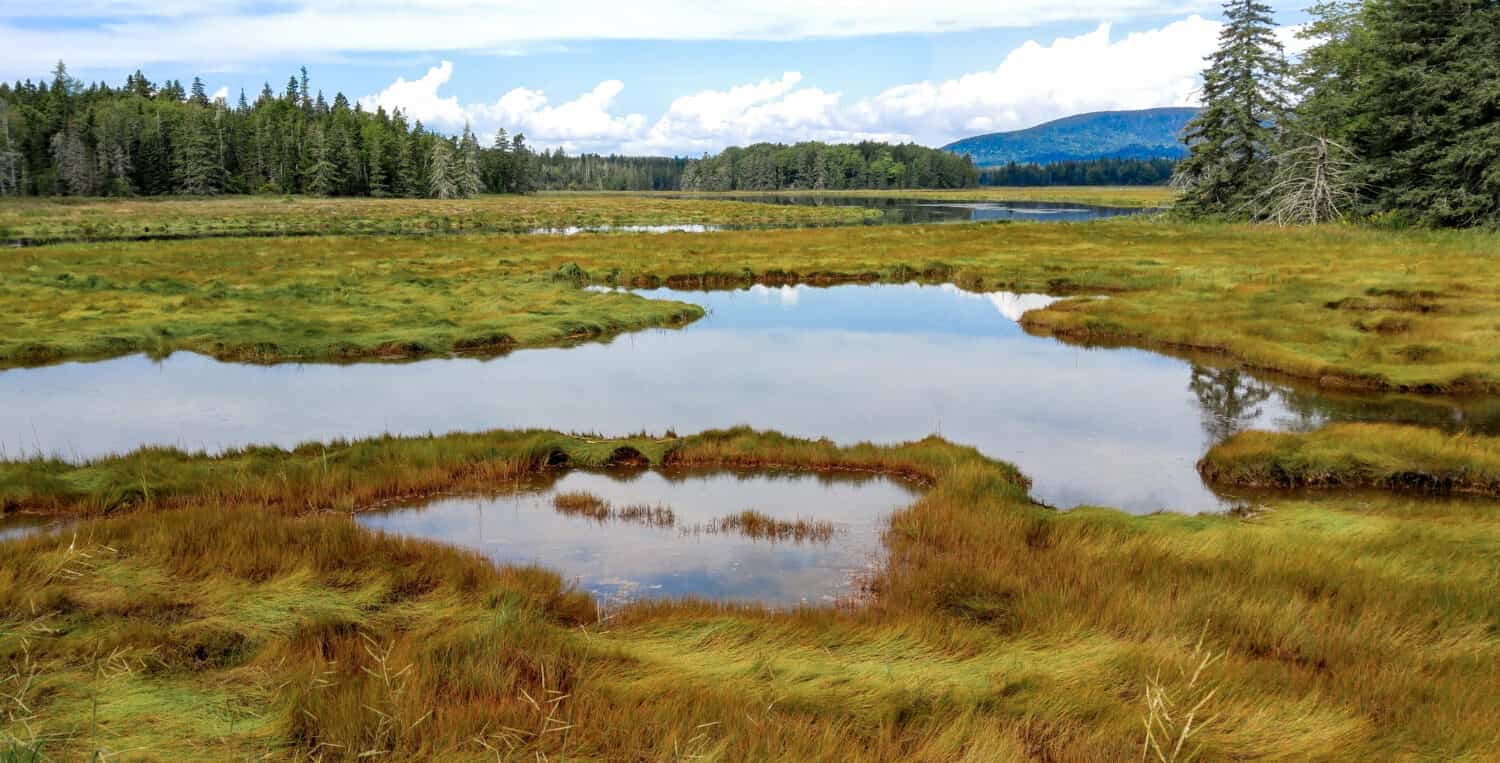
Foreign investors flock to Maine’s land market, taking advantage of its open policies.
©Earl D. Walker/Shutterstock.com
3. Maine Land Trusts – 2,500,000+ Acres
Land trusts in Maine have conserved over 2.5 million acres as of this writing. These are charitable organizations with Mainers’ best interests at heart. Their primary objective is to enhance the quality of their lives by:
- Providing recreational facilities.
- Offering limitless economic opportunities.
- Promoting the growth and consumption of locally grown food.
- Availability of adequate clean water.
- Offering quality educational programs on various topics, including nature conservation.
- Protecting native wildlife and their habitats.
Maine Land Trusts Collaborators
Maine land trusts don’t work alone. Instead, they partner with interested landowners across the state, particularly those hoping to place their family land in ‘safe hands,’ even after they’re gone. In turn, the organizations manage the properties properly, adhering to the highest standards based on values like productive farmlands, healthy and sustainable ecosystems, and water quality.
Here are some of the properties in the hands of land trusts in Maine:
- Grist Mill Preserve
- Laudholm Farm
- Battery Steele
- Ice Pond
- Mast Landing
- Malaga Island
- Peabody-Fitch Woods
- Shaker Village
- Curtis Homestead
- Langlais Sculpture Preserve

Maine land trusts and landowners collaborate to protect and manage properties, ensuring the preservation of productive farmlands for future generations.
©Pavlos Orfanidis/Shutterstock.com
4. J.D. Irving – 1,250,000 Acres
Controlling 1.25 million acres, the Irving family is the largest private landowner in Maine. The Canadian empire possesses an additional 3.2 million acres and 2.6 million acres of Crown Land in their home country’s New Brunswick, cementing its place as one of the wealthiest families in the United States.
The Irving family runs Irving Woodlands, a thriving lumber company that has been in business since 1957. It has a team of over 1500 professionals in Canada, Maine, and other parts of the nation, all working to protect the plants, animals, and natural resources on their land.
To ensure healthy forests, the Irving family harvests wood from forests nationwide after experts have audited and certified the resources. It also helps to curb climate change by ensuring their land positively impacts the environment. Moreover, the company has created employment opportunities – directly and indirectly – for up to 16,000 individuals.
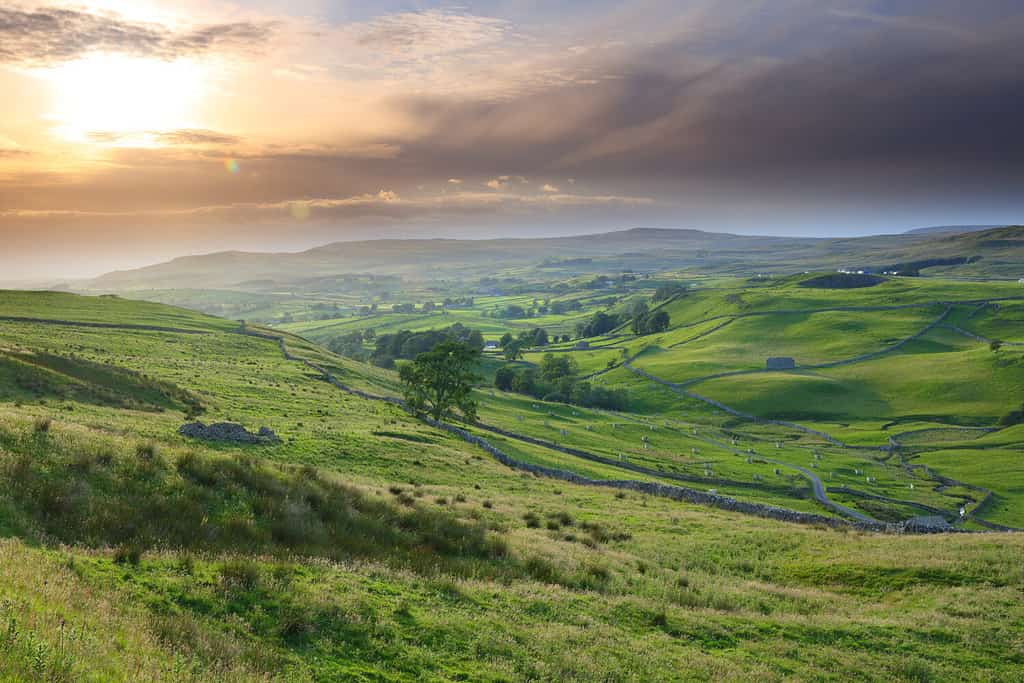
The Irving family, Maine’s largest private landowner, oversees vast holdings totaling 1.25 million acres.
©Colin Ward/Shutterstock.com
5. The Pingree Family – 830,000 acres
Owning 830,000 acres in Maine, the Pingree heirs are among the nation’s top ten largest landowners. Their patriarch was David Pingree, who hailed from Georgetown, Massachusetts, and worked as a merchant to amass his wealth. Pingree was also into politics as he served as Salem’s mayor between 1851 and 1852.
Nearly a century after he died in 1863, Pingree’s wealth was used to create the Maine-based Seven Islands Land Company, which specializes in timber management. As of this writing, the firm oversees roughly one million acres of forestland in North Maine Woods.
Intriguingly, the Pingree family holdings are traced back to 1820, long before Maine was recognized as a state. Being in the game for more than 150 years could explain why the family is now among the nation’s wealthiest individuals, in the same pool as the Irving family, the Walton, and Mars families.
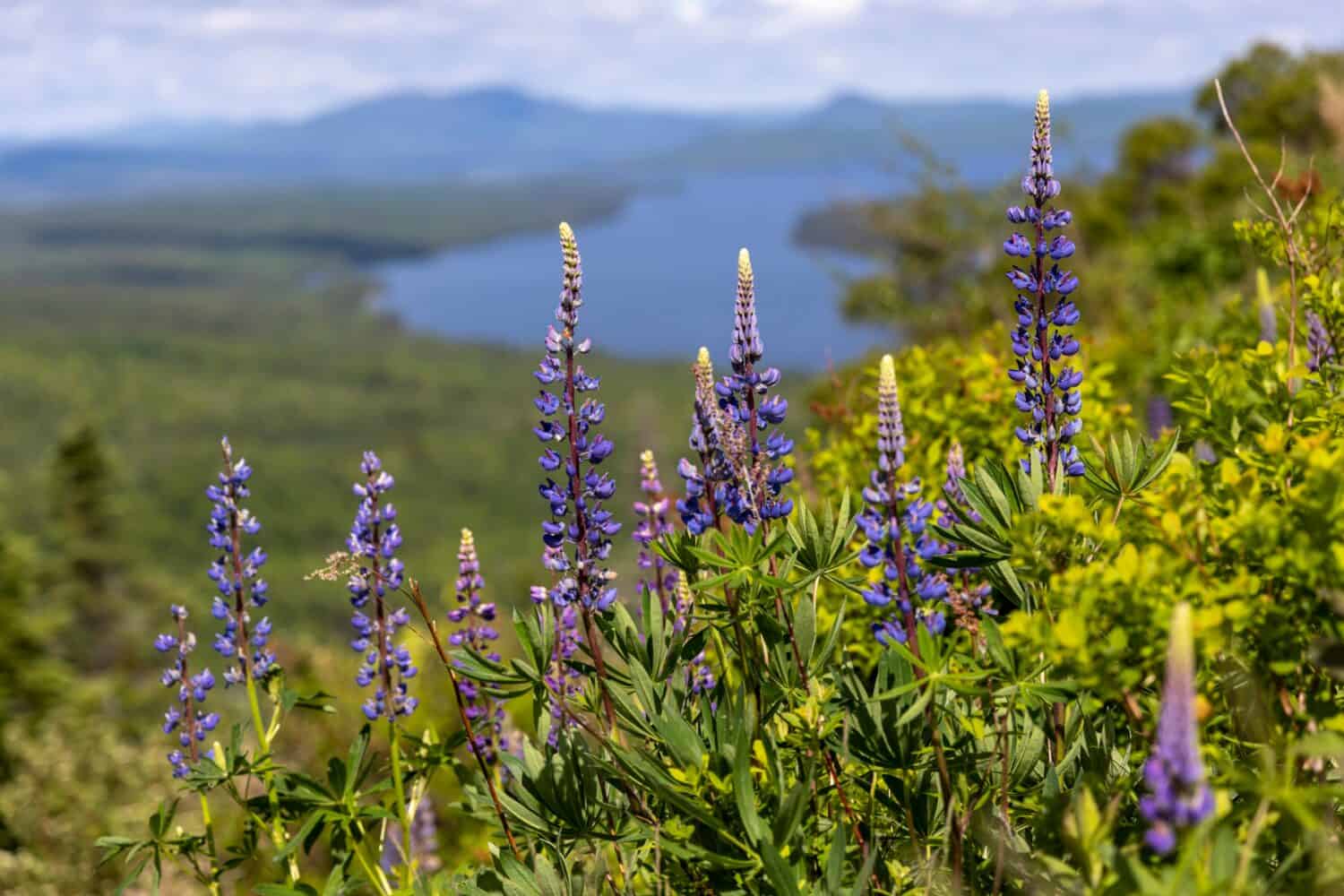
The legacy of Pingree lives on through the Seven Islands Land Company, managing one million acres of forestland in North Maine Woods.
©Robert Babcock/Shutterstock.com
6. Federal Government – 209,735 Acres
At the time of this writing, the federal government oversees 209,735 acres or 1.06% of Maine’s land. While the U.S. Bureau of Land Management doesn’t manage any of it, other federal agencies have a share.
U.S. Forest Service
The Forest Service controls 53,709 acres in the Pine Tree State. The Maine Forest Service is tasked with ensuring the state’s forest lands continually benefit Mainers by providing recreational, learning, and business opportunities. As such, the government department advocates for the planting and preserving of trees, protecting them from the damaging effects of wildfires, pests and diseases, and misuse.
White Mountain National Forest
The White Mountain National Forest in Maine and New Hampshire is under the Forest Service’s jurisdiction. It occupies nearly 800,000 acres in the two states, availing fun opportunities for outdoor lovers worldwide.
For instance, the forest has up to 22 campsites and many hiking trails for Mainers to explore. What’s more, it provides fantastic spots for many other exciting undertakings, such as:
- Swimming
- Boating
- Cross-country skiing
- Nature photography
Again, if your face lights up whenever you spot living things, you’ll certainly enjoy your time at the White Mountain National Forest. You’ll spot animals like white-tailed deer, eagles, peregrine falcon, porcupines, foxes, coyotes, and Canadian lynx roaming this natural wonder. Some of the vegetation dominating it are maple, beech, and birch.
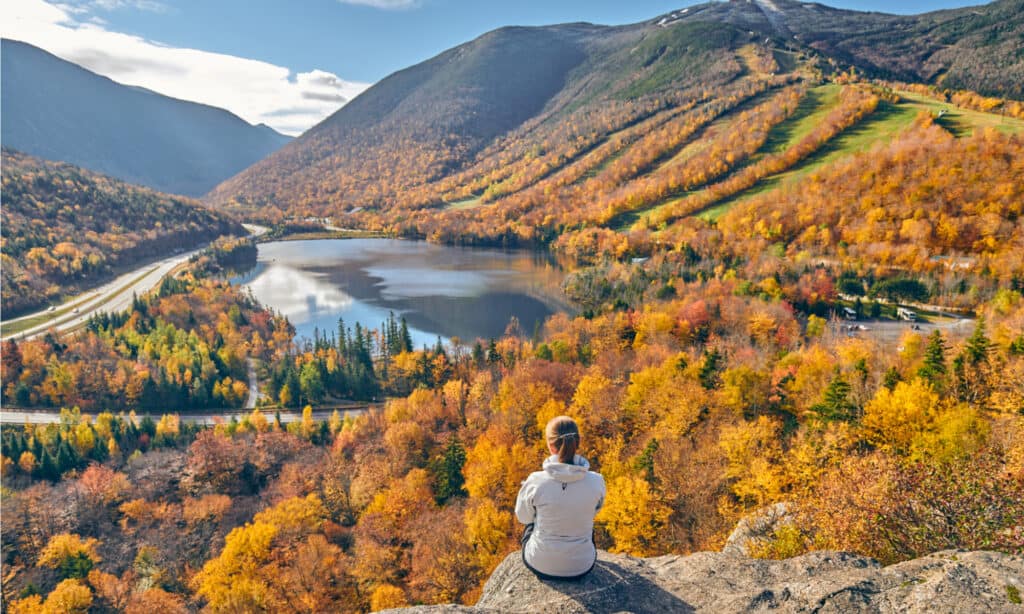
The forest has up to 22 campsites and many hiking trails open to explorers.
©haveseen/Shutterstock.com
U.S. National Park Service
The U.S. National Park Service is Maine’s largest federal land owner, overseeing 66,898 acres. The agency manages the Katahdin Woods and Waters National Monument in Penobscot County. The national reserve hosts a wide pool of native wildlife, including bald eagles, salmon, moose, and Canada lynx. Moreover, this popular destination for hikers has many rivers and streams.
The National Park Service is also in charge of Acadia National Park, which has many spectacular rocky beaches and magnificent mountains. It was the first national park ever built from private lands that conservation-minded landowners gifted the public. Today, the park provides limitless opportunities for Mainers to enjoy camping, cross-country skiing, ice fishing, snowmobiling, and hiking.
Additionally, NPS oversees the Appalachian Trail in Maine, the Maine Acadian Culture in St. John Valley, Roosevelt Campobello in Lubec, and Saint Croix Island.
U.S. Fish and Wildlife Service
The U.S. Fish and Wildlife Service has secured 65,987 acres in Maine. Like all other states nationwide, the federal department collaborates with local agencies and Mainers to protect and improve the quality of life for wildlife, fish, and native plant species. Ultimately benefiting every American in Maine and beyond.
The Maine Fish and Wildlife Conservation Office was established in 2005. As of this writing, it has completed nearly 200 aquatic connectivity projects in partnership with the Fish and Wildlife Service. These programs enhanced fish habitats across the state, giving even the endangered Atlantic salmon a chance to thrive.
Moreover, the Maine Fish and Wildlife Conservation Office has joined hands with the U.S. Fish and Wildlife Service to restore different migratory species, including:
- Atlantic sturgeon
- Striped bass
- American shad
- American eel
- Blueback herring
- Alewife
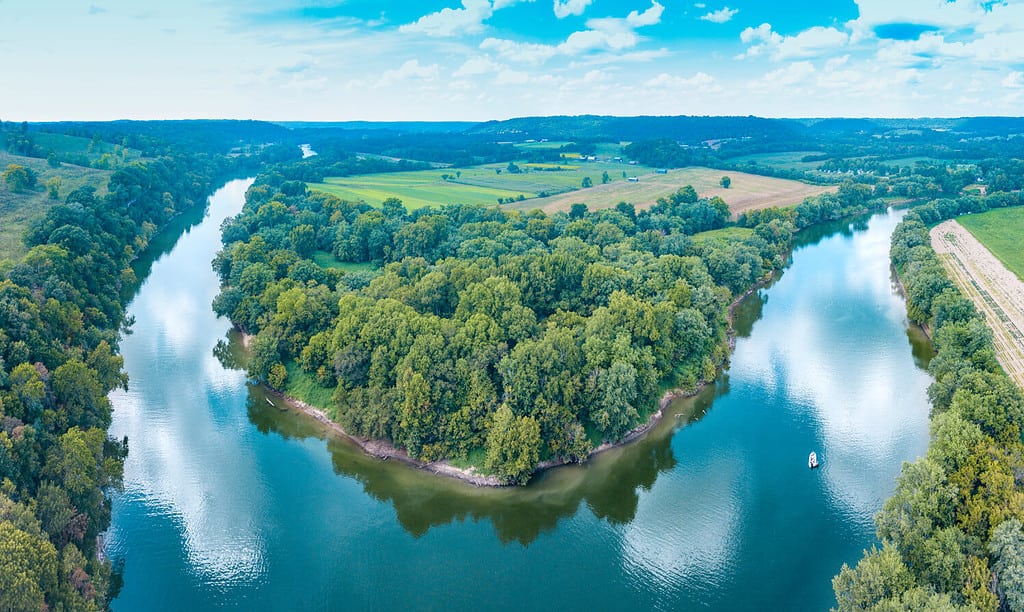
The U.S. Fish and Wildlife Service collaborates with local agencies and Mainers to protect wildlife and native plants, securing 65,987 acres in Maine for a better quality of life for all.
©Cade Nathaniel Nicholson/Shutterstock.com
U.S. Department of Defense
The DoD controls 23,141 acres in Maine. The federal agency’s primary objective is to protect Americans in Maine and other states. Therefore, its land in the Pine Tree State hosts military bases, training ranges, and other essential assets to help it attain its goal.
Note that although the DoD only owns 23,141 acres in Maine, the agency oversees more than 30 million acres nationwide. In New Mexico, for instance, it’s in charge of 3,395,090 acres, which is fewer than other government bodies’ land in the state. For example, the U.S. Bureau of Land Management owns 13,484,405 acres, while the U.S. Forest Service controls 9,417,975 acres.
Military Bases in Maine
MTA Deepwoods is one of Maine’s well-known military training centers, nestled on the Great North Woods’ outer border. Another famous joint base is the MTA Riley-Bog Brook in Oxford County—it has a confidence course, a rappelling tower, a land navigation course, and a gas chamber.
Roughly 16 miles from Caribou is TS Caswell, which occupies about 859 acres in Aroostook County. The base provides five ranges for training, including M203, rifle, and pistol. York County is home to the 540-acre TS Hollis Plains, with sandy soils and plenty of swampy patches.
Maine’s Largest Land Owners
Maine’s largest landowners have undoubtedly played a significant role in the state’s social and economic development. As we’ve seen above, some manage recreational facilities like parks, providing Mainers with diverse spaces where they can congregate and bond while having fun. Others operate large companies that offer job opportunities, helping curb unemployment in Pine Tree State, and improving people’s lives.
But indeed, one of the most intriguing aspects of Maine’s land ownership realm is that the federal government doesn’t own much land. Instead, private and foreign investors are at the top, leveraging their properties to benefit themselves and others in their beautiful state.
If you intend to become a landowner in Maine, you’re making a great investment. Fortunately, the vast real estate market here is awash with quality pieces for sale. Acquiring them is super easy for both locals and foreigners. However, be cautious to avoid being tricked into buying a parcel unworthy of its price tag. Hire a trustworthy local realtor to guide you and help you put your money into a valuable property in your preferred part of the state.
Summary of The 6 Largest Land Owners In Maine
| Rank | Land Owner | Acreage |
|---|---|---|
| 1 | Foreign Investors | 17,955,835 Acres |
| 2 | Foreign Investers | 3,504,096 Acres |
| 3 | Maine Land Trust | 2,500,000+ Acres |
| 4 | J.D. Irving | 1,250,000 Acres |
| 5 | The Pingree Family | 830,000 acres |
| 6 | Federal Government | 209,735 Acres |
The photo featured at the top of this post is © Marcio Jose Bastos Silva/Shutterstock.com
Thank you for reading! Have some feedback for us? Contact the AZ Animals editorial team.






